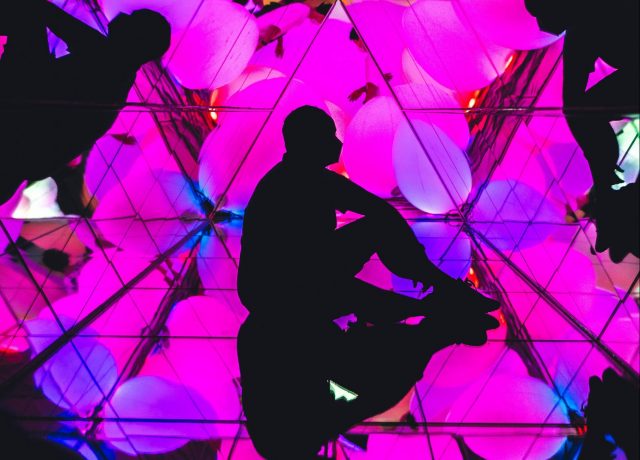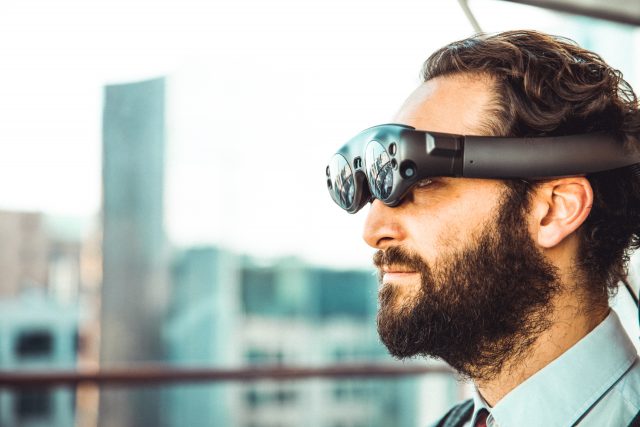Can technology make tourism more transformative ?

Photo by Suzanne D. Williams on Unsplash
Transformative tourism (TT) is a type of meaningful and purposeful tourism. Traditional tourism is often used as an escape mechanism from everyday life (5). Transformative tourism is motivated by seeking (10). In transformational tourism the tourist seeks personal growth during their travels, which can take place in areas such as well-being, spirituality and education. The transformative experiences tourists have can be physical, emotional, attitudinal changes as well as the acquisition of context-specific skills (17). These types of tourists are motivated to return home with some personal tools enriched by the experiences of their journey (16) – the purpose of travel instead of escaping reality is about possibly making the reality somehow better or more meaningful.
Transformative tourism is about change (hopefully) for the better and it can provide meaningful experiences. Because of this, it has gained a lot of attention during recent years; it has the power to change human behaviour and have a positive impact on the world (17). These explanations should be enough to support the idea that this type of tourism should be encouraged and developed further.
What makes designing and developing transformative tourism tricky is that it can be different for every tourist. By enhancing the experiences by deepening them, and making them more immersive, can support the occurrence of unintentional transformative tourism and elements of it. There are three different kinds of experiences that are considered transformative: epistemically transformative experience (having a first time experience), personally transformative experience (changes your point of view, your core preferences or you learn something that expands your mind) and epistemically and personally transformative experience, which is a holistic experience that possibly changes the course of one’s life (15).
Technology has changed the value creation process in customer service as it has become a key contributor to consumer experience; a big part of the hospitality and tourism products and services are nowadays delivered by different technologies (8). Technologically enhanced tourism is also changing travel behaviour and activities (7). As technology is said to enhance the customer experience (1), could it also be used to develop and enrich tourism to be and to have more transformative elements? What kinds of solutions are already out there that could be used to make tourism services and experiences possibly more transformative?
There are two critical digital technology stimuli that can lead to a rich customer experience: personalisation and interactivity (14). Based on my readings, I would also add immersion to the list of stimuli. Immersion is the level that describes a feeling of ‘being there’ (20). These can be considered to be the key factors in any tourist experience maximization and thus important factors to consider when talking about whether technology can make tourism more transformative.

Photo by Roméo A. on Unsplash
Smart tourism’s transformative possibilities
Let’s look into the question through the concept of Smart Tourism, which means technology enhanced tourism. A Smart Travel Destination uses technology based tools in its products, services, spaces and experiences (7). These tools are Smart Tourism Technologies that refer to both general and specific applications that can enhance tourists’ experiences as well as generate added value (25). These applications can be anything from ubiquitous connectivity through Wi-Fi to sensors, smartphones and virtual reality (7; 8). Let’s have a look at how Smart Tourism Technologies (STTs) with the most transformative potential have to offer transformative tourism.
Gamification
Gamification is the use of game design elements and game thinking in a non-gaming context (6) so it is more of a point of view when using smart technologies and designing transformative tourist experiences. With the help of gamification, tourists can get more engaged with the information and the experience they are receiving. If the tourist engagement rises, it can enhance the tourist experience in terms of flow, motivation, pleasure, immersion, enjoyment and presence (3). An example of using gamification and technology together to create a more transformative tourism experience could be an application that teaches the tourist history in the form of a game on a self-guided city tour.
Augmented reality
An augmented reality system merges physical and virtual objects in a natural environment, aligns them, and runs them interactively in real time (22). The goal of augmented reality is to support user interaction with the world around them (2). Augmented reality systems can be wearable computers, such as a smartwatch or smart glasses (26). How smart watches can enhance the tourist experience and possibly make it more transformative is that they extend the tourist’s sensory, cognitive, and motor limitations (2) and adapt the tourists behaviour to the changing environments. A wearable device can shape how tourists orient themselves, interact, and control their interactions with tourism attractions (21). Wearable computers, like any other computer, can also model behaviour and predict the future actions of the tourist so they are said to have potential to transform touristic experiences (21).

Photo by My name is Yanick on Unsplash
Augmented reality has already been applied to destinations and to tourist experiences to assist tourists with retrieval and processing of information on points of interest at physical structures, national parks, walking experiences, historic and cultural objects, museum exhibits, art galleries, and indoor theme parks by overlaying exhibits with additional information through touch-screen displays, smartphones, and/or wearable devices (21). With the help of technology assisted immersion, in this case augmented reality, tourists can be engaged in a more unique and interactive way than in traditional tourism (12). Also, if information is presented through augmented reality (or virtual reality), the information can become more memorable (11) and thus possibly more transformative.
As an augmented reality system merges physical and virtual objects in a natural environment to support tourists’ interaction with the world around them there are clear indicators of experience enhancement, which could make the experience more transformative. If we think about the gamification application example (the history teaching, game-like self-guided city tour application), it could also have augmented reality elements to it. These elements could be for example Google glasses type of images and videos of the historical events. Maybe they could even be holograms in the future. Whether or not the information provided to the tourist is transformative by itself, its transformative qualities could be enhanced and supported with augmented reality.
Virtual reality
When it comes to virtual reality there are more indicators of possible experience enhancement which could make the experience more transformative than augmented reality; the whole tourist experience can be designed from start to finish to be as transformative as possible. According to NASA virtual reality is “the use of computer technology to create the effect of an interactive three-dimensional world in which the objects have a sense of spatial presence.” In tourism it is used to capture destinations, attractions, to re-create events or to create totally new destinations, events and experiences (24). Virtual reality experiences have three key elements: visualisation components, immersion into the experience is a key factor and interactivity is involved in the experience (4). In the future these can most likely be personalised which means that there will be technically everything (personalisation, interactive and immersion) needed for a tourist to have an experience – whether or not that experience can be transformative depends on the tourist.
Other Smart Tourism Technology possibilities
If we look at Smart tourism from a less futuristic and a more practical lens, STT is already capable of making experiences and customer touchpoints more interactive and personalised according to tourists’ preferences (13,11). With the help of STTs almost everything can be personalized and tourists can be provided with the most relevant and context-specific information, expertise, and experiences delivered in real-time or just when they need it (14). To have more personalized services and experiences can support transformative experiences happening, because each tourists’ experience and transformativity is highly objective.
Tourism products can also be tailored to be more interactive with the help of STT (11). Interactivity gives buyers a sense of control so they can feel like they are in control of their own experience (27) – this can support the possible transformativity. At the same time, tourists can also interact with local residents within destination business ecosystems and the larger tourism ecosystems (7). This can support transformation as socialising with people from different cultures or just people outside your own circle of people can teach you something or show you a new point of view. Also, the use of STTs might affect the engagement and immersion of tourist experience (11).
Smarter the more transformative?
Even though smart technologies are slowly getting more popular to use in tourist experiences and at smart tourism destinations, research on smart tourism destinations is limited. Research about gamification in tourism is also limited and the application of gamification in tourism is still in its infancy (8). There’s also no clear definition of what a consumer technology experience is or what a technology experience is. Because of the lack of research, the impacts of consumers’ technology experience on their overall experience remain unknown (11). Needless to say, this means that there are also no studies about whether technology can make tourism more transformative so we have no way to answer whether or not technology can actually make tourism more transformative.
Regardless of the lack of research, the introduction of guest-facing technologies is changing one of the industry’s key characteristics, human-to-human interactions, into guest-technology interactions. Tourists are already interacting with artificial intelligence chatbots, service delivery robots (11), and mobile tour guide apps have partly replaced the traditional human travel guide and information desk. Travellers are also creating their own travel itineraries with the help of the internet. Social contacts and socialising with new cultures is a big part of travel; a cross-cultural interaction can already be a transformative experience. Is there a possibility that technology could be making tourism less transformative? Technology is also making travelling a lot more convenient and easy. Yet somehow it seems that the reward of seeing the sunrise is much more transformative if you have climbed a mountain to witness it.

Also, a big part of the tourist experience is about immersion. Technology can of course help with immersion, but it can also hinder it. The term selective unplugging refers to being partially connected or disconnected from technology during travel to be more connected and present in the moment (19). To be more connected and present is essential for transformative travel, but what if connection and the feeling of being present are provided with the help of technology? Maybe then the tourist has chosen the wrong destination to travel to, but it’s an important topic to think about when designing and promoting technology-mediated travel experiences. Also when thinking about transformative travel, the tourists who decide to unplug are most likely tourists that are escaping their reality. They are not seeking something, which means that most of them are not transformative tourists. Still, the possible avoidance of technology makes it challenging to create transformative elements to tourist destinations and experiences with smart tourism, if people are not motivated to use technology during their trip.
Even though technology is changing the way we travel, its power and possibilities are yet to be harnessed when it comes to transformative tourism. Smart tourism in tourist experiences and in tourism in general is often in a supporting role; most smart technologies tourists use are STTs like maps/navigation apps, ride-sharing programs, city guide apps, mobile payment, and parking apps (14). Yet we can see that technology, especially augmented reality and virtual reality, has great potential to make tourism experiences more transformative in the future. Still, what is transformative to the tourist will always depend on the tourist itself – meeting a local in a travel destination can be a far more transformative experience to the tourist than an augmented reality city tour. The city tour can just be a memorable and unforgettable experience at a smart tourism destination, which doesn’t sound like a bad thing at all.
REFERENCES
- Accenture (2019). Accenture-China-Digital-Transformation-Index-2019. Accenture.
- Barfield W. & Caudell T. (2001). Basic Concepts in Wearable Computers and Augmented Reality. In Fundamentals of Wearable Computers and Augmented Reality.
- Brown, E. & Cairns, P. (2004). A grounded investigation of game immersion. Conference on Human Factors in Computing Systems – Proceedings.
- Cruz-Neira, C., Sandin, D. J., Defanti, T. A., Kenyon, R. V. & Hart, J. C. (1994). The cave: audio visual experience automatic virtual environment. Communications of the AMC.
- Cohen, E. (1996). A phenomenology of tourist experiences. The sociology of tourism: Theoretical and empirical investigations.
- Deterding, S., Dixon, D., Khaled, R., & Nacke, L. E. (2011). From game design elements to gamefulness: Defining “Gamification”. Mindtrek 2011 Proceedings. Tampere, Finland: ACM Press.
- Gretzel, U., Sigala, M. & Xiang, Z. (2015). Smart tourism: foundations and developments. Electron Markets, 25.
- Huang C.D., Jahyun, D., Kichan, N. & Woo, Y.C. (2017). Smart Tourism Technologies in Travel Planning: The Role of Exploration and Exploitation. Information & Management 54, 6.
- Huotari, K., & Hamari, J., 2012. Defining gamification: A service marketing perspective. In: Proceedings of the 16th International Academic MindTrek Conference, Tampere, Finland: ACM.
- Iso-Ahola, S. E. (1997). A psychological analysis of leisure and health. Work, leisure and well-being. New York, NY: Routledge.
- Jeong, M., & Shin, H. H. (2020). Tourists’ Experiences with Smart Tourism Technology at Smart Destinations and Their Behaviour Intentions. Journal of Travel Research, 59, 8.
- Lee, H., Lee, J., Chung, N. & Koo, C. (2018). Tourists’ happiness: Are there smart tourism technology effects? Asia Pacific J. Tour. 23.
- Oh, H., Fiore, A. M., & Jeoung, M. (2007). Measuring Experience Economy Concepts: Tourism Applications. Journal of Travel Research, 46, 2.
- Parise, S., Guinan, P.J. & Kafka, R. (2016). Solving the crisis of immediacy: How digital technology can transform the customer experience. Business Horizons, 59, 4.
- Paul, L.A. (2021). Teaching Guide for Transformative Experience. Yale University Department of Philosophy.
- Robledo, M.A. & Batle, J. (2015): Transformational tourism as a hero’s journey, Current Issues in Tourism.
- Rus, K.A., Dezsi, S, Ciascai, O.R. & Pop, F. (2022). Calibrating Evolution of Transformative Tourism: A Bibliometric Analysis. Sustainability 2022, 14.
- Shin, H.H., Jeong, M., So, K.K. & DiPietro, K. (2022). Consumers’ experience with hospitality and tourism technologies: Measurement development and validation. International Journal of Hospitality Management, 106.
- Tanti, A. & Buhalis, D. (2016). Connectivity and the Consequences of Being (Dis)connected. In: Inversini, A., Schegg, R. (eds) Information and Communication Technologies in Tourism 2016. Springer, Cham.
- Torabi Z., Shalbafian, A.A., Allam, Z., Ghaderi Z., Murgante. B, & Khavarian-Garmsir, A.R. (2022). Enhancing Memorable Experiences, Tourist Satisfaction, and Revisit Intention through Smart Tourism Technologies. Sustainability 2022, 14.
- Tussyadiah, I. P., Jung, T. H., & tom Dieck, M. C. (2018). Embodiment of Wearable Augmented Reality Technology in Tourism Experiences. Journal of Travel Research, 57, 5.
- van Krevelen, Rick & Poelman, Ronald. (2010). A Survey of Augmented Reality Technologies, Applications and Limitations. International Journal of Virtual Reality.
- Virtual Reality: Definition and Requirements. NASA. Retrieved 18.11.2022 from https://www.nas.nasa.gov/Software/VWT/vr.html
- Williams, P. & Hobson, J.P. (1995). Virtual reality and tourism: fact or fantasy?,Tourism Management, 16.
- Neuhofer, B., Buhalis, D., & Ladkin, A. (2015). Technology as a Catalyst of Change: Enablers and Barriers of the Tourist Experience and Their Consequences. Information and Communication Technologies in Tourism 2015.
- Rauschnabel, P. A., Brem, A., & Ivens, B. S. (2015). Who will buy smart glasses? Empirical results of two pre-market-entry studies on the role of personality in individual awareness. intended adoption of Google Glass wearables. Computers in Human Behavior, 49.
- Klein, L. R. (2003). Creating virtual product experiences: The role of telepresence. Journal of Interactive Marketing, 17, 1.
- Can technology make tourism more transformative ? - November 20, 2022